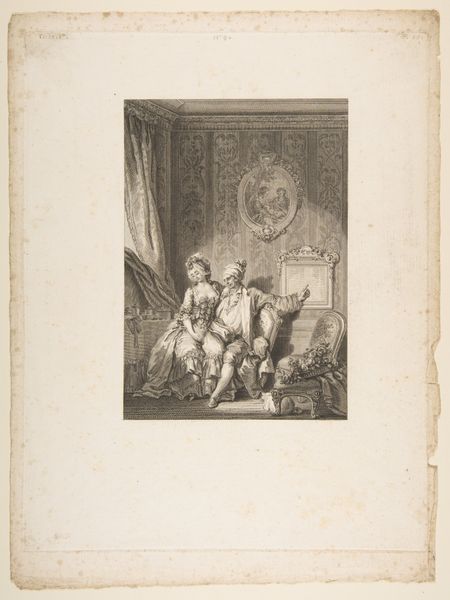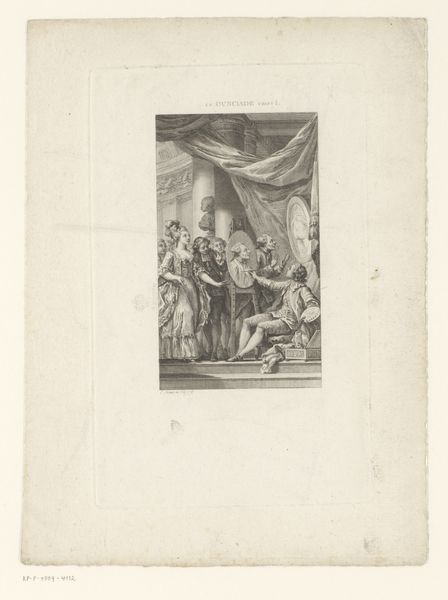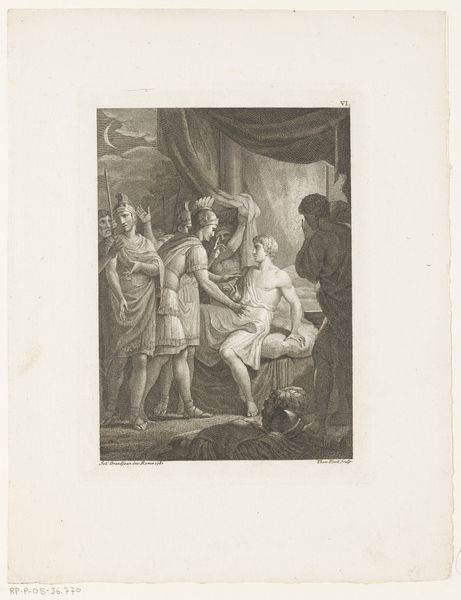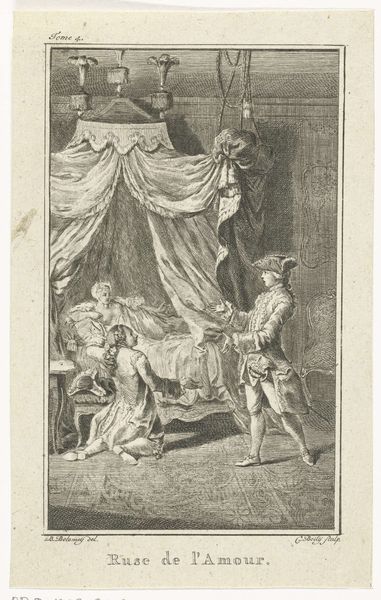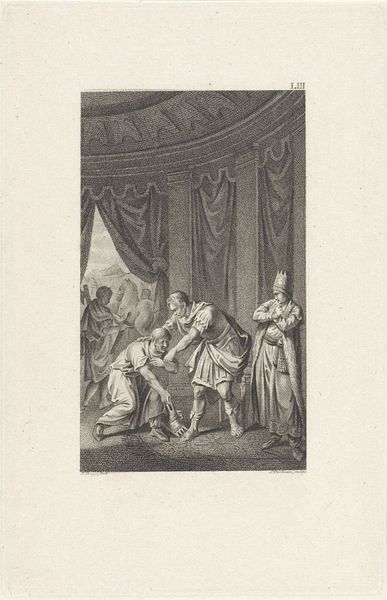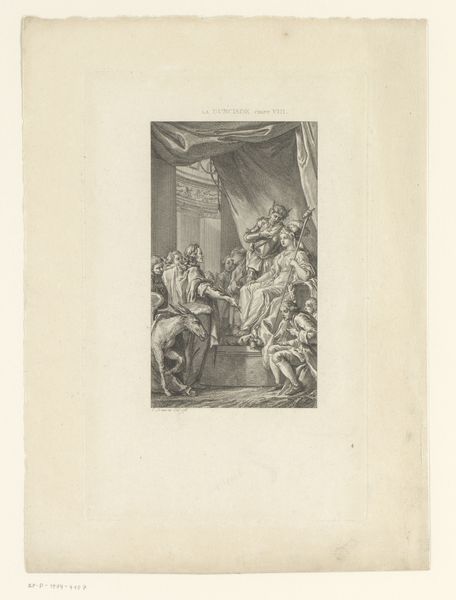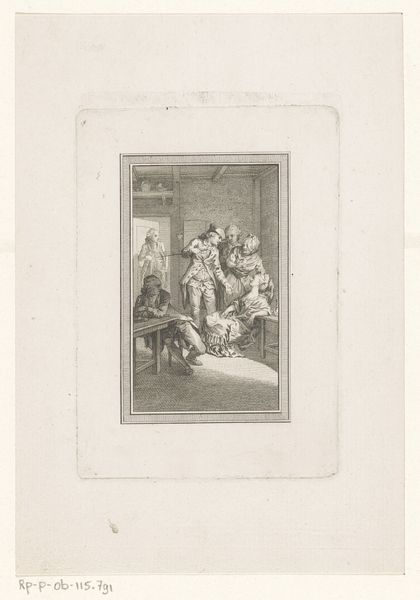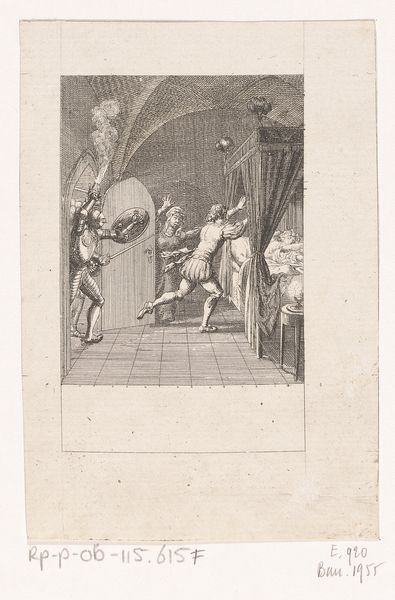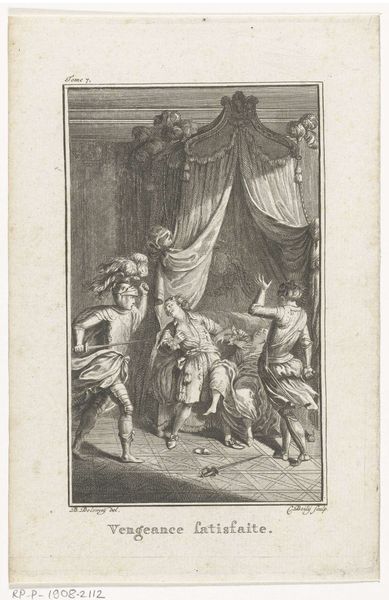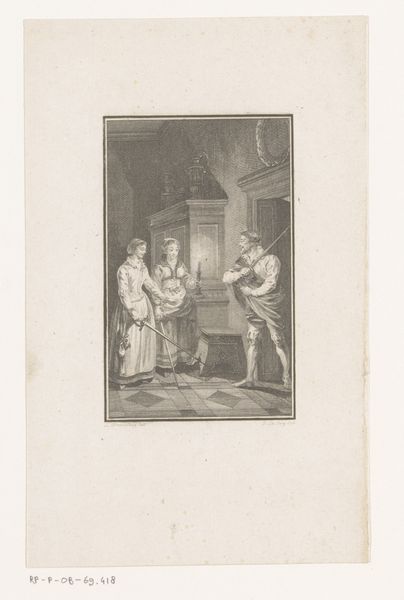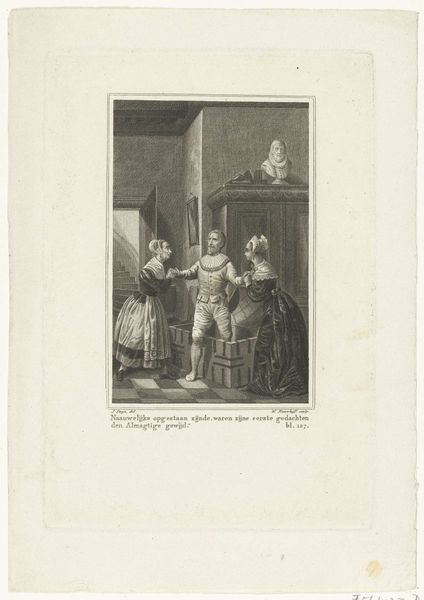
Dimensions: height 201 mm, width 125 mm
Copyright: Rijks Museum: Open Domain
Curator: Here we have an etching by Franciscus Sansom from 1792, titled "Edward III bij Isabella en Mortimer," which translates to "Edward III with Isabella and Mortimer." Editor: My first impression is one of stark theatricality. The high contrast and precise lines evoke a sense of drama and historical gravitas, don’t you think? It is as though we have captured a frozen moment of intense conflict. Curator: Absolutely. The composition uses a central grouping, drawing the eye directly to the figures. Note the fine lines employed to create textures and shadows— observe the detailing of garments and the subtle gradients which add dimension. The composition strikes me as academic. Editor: Indeed. Considering Sansom was working in the late 18th century, amidst the currents of Romanticism, the print reads like a staging of power and control. Isabella, alongside Mortimer, held considerable power after the deposition of Edward II, which undoubtedly impacted Edward III who subsequently deposed them in turn. Her dress almost reads like a robe. What is she claiming to rule over? And what does her presence do to destabilize the masculine, patriarchal space, as represented by the architectural order? Curator: Good points. Speaking from a structural perspective, Isabella seems placed deliberately in between the two figures. I suggest that placement serves a compositional need and thematic purpose in underscoring power relations and the psychological dimensions within. What also strikes me is the formalist quality in Sansom's lines; this recalls Baroque dramatic staging techniques, like heavy chiaroscuro. Editor: Precisely. The space certainly operates beyond pure aesthetic admiration, which raises questions regarding the legitimacy of inherited power. Edward, at this moment captured by Sansom, has had his fate dictated by his mother, operating beyond traditionally prescribed social norms and laws of governance. Sansom thus reveals the complexity and vulnerability of childhood power. What is his positioning in that theatricality, and more specifically, his costume in that construction? Curator: The positioning appears subservient as a foil between mother and Mortimer, who form a rather imposing, dynamic dyad. And yet there remains a Romantic sentimentality that draws us into an imagined reality and lived psychology of the era. What I’m left with is a renewed understanding of form and historical function that constitutes this historical and Baroque moment. Editor: For me, this image is also indicative of complex power dynamics at play that intersect the private sphere of the maternal figure and her own political agency with a larger claim over governance and English political rule.
Comments
No comments
Be the first to comment and join the conversation on the ultimate creative platform.
